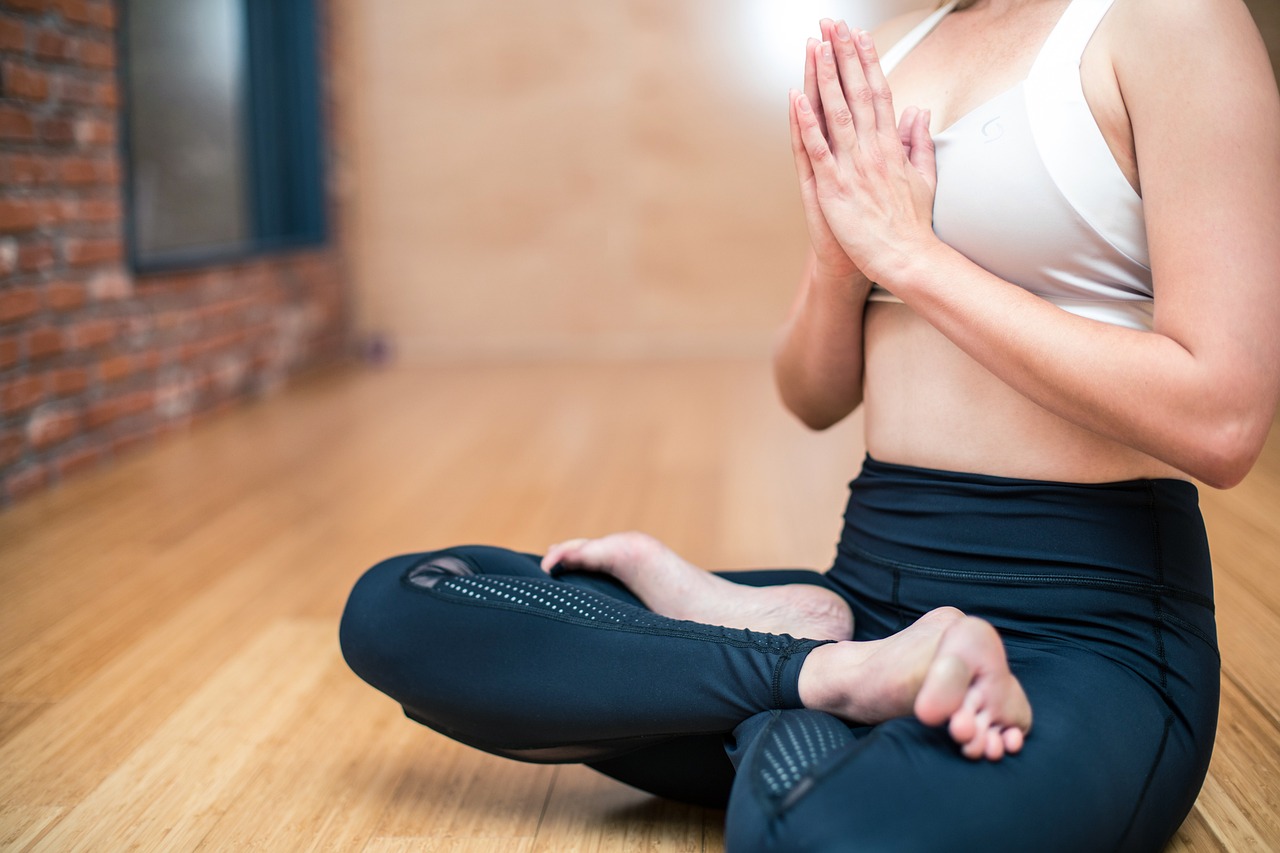
Breathing Techniques For Enhancing Concentration And Reducing Stress
In this article, you will discover powerful breathing techniques that can enhance your concentration and decrease your stress levels. With the increasing demands of modern life, it’s easy to get overwhelmed and lose focus. However, by incorporating these mindfulness techniques and concentration strategies into your daily routine, you can learn to eliminate distractions and stay present in the moment. By harnessing the power of your breath, you can cultivate a sense of calm, improve your mental clarity, and boost your productivity. So, let’s explore these simple yet effective techniques that can transform the way you approach your tasks and reduce stress in your life.
The Importance of Breathing Techniques
Breathing techniques are an essential tool that can greatly enhance your concentration and help reduce stress. In our fast-paced and often stressful lives, taking a moment to focus on our breath can have transformative effects on our mental and physical well-being. By practicing different breathing techniques, you can tap into the power of your breath to calm your mind, center your thoughts, and find a sense of peace and clarity.
Deep Breathing
What is deep breathing?
Deep breathing, also known as diaphragmatic breathing or belly breathing, is a technique that involves taking slow, deep breaths, fully expanding your diaphragm, and filling your lungs with air. Unlike shallow breathing, which only utilizes the upper chest, deep breathing allows you to fully oxygenate your body and engage your diaphragm, resulting in a multitude of benefits for your overall well-being.
Benefits of deep breathing
Deep breathing has been shown to have numerous benefits, particularly in enhancing concentration. When you take deep breaths, more oxygen is delivered to your brain, increasing its functionality and improving your ability to focus. Additionally, deep breathing activates the parasympathetic nervous system, which promotes relaxation and can help reduce stress and anxiety.
How to practice deep breathing
To practice deep breathing, find a comfortable and quiet space where you can sit or lie down without any distractions. Close your eyes and take a few moments to settle into your surroundings. Begin by inhaling deeply through your nose, allowing your abdomen to rise as you fill your lungs with air. Hold your breath for a brief moment, and then exhale slowly through your mouth, emptying your lungs completely. Repeat this process for several minutes, focusing solely on your breath and the sensations it creates in your body.
Diaphragmatic Breathing
What is diaphragmatic breathing?
Diaphragmatic breathing, also known as abdominal breathing or belly breathing, is a technique that emphasizes the movement of the diaphragm while breathing. The diaphragm is a dome-shaped muscle located beneath your lungs that plays a crucial role in the breathing process. By consciously engaging and strengthening the diaphragm, you can improve your breathing efficiency and experience a range of benefits.
Benefits of diaphragmatic breathing
Diaphragmatic breathing can greatly contribute to enhancing concentration. By breathing deeply and engaging the diaphragm, you encourage the flow of oxygen to your brain, resulting in increased mental clarity and focus. This technique also helps to activate the relaxation response in your body, allowing you to release stress and anxiety and enter a state of calmness.
How to practice diaphragmatic breathing
To practice diaphragmatic breathing, find a quiet and comfortable space where you can sit or lie down. Place one hand on your chest and the other hand on your abdomen. Take a slow, deep breath in through your nose, allowing your abdomen to rise as you fill your lungs with air. Feel the expansion of your chest, but ensure that the movement of your abdomen is more pronounced. Exhale slowly through your mouth, allowing your abdomen to gently fall. Continue this pattern, focusing on the movement of your diaphragm, for several minutes.
Box Breathing
What is box breathing?
Box breathing, also known as square breathing, is a technique that involves inhaling, holding your breath, exhaling, and then holding your breath again in a pattern. This technique gets its name from the equal length of each phase, creating a balanced and structured breathing pattern.
Benefits of box breathing
Box breathing is an effective technique for enhancing concentration. By following a specific pattern of breath, you establish a rhythmic and repetitive process that helps to anchor your attention and bring your mind into the present moment. This technique can also be incredibly calming and soothing, reducing stress and allowing you to access a state of deep relaxation.
How to practice box breathing
To practice box breathing, find a quiet and comfortable space where you can sit with your spine straight. Close your eyes and take a few deep breaths to settle into your body. Begin by inhaling slowly through your nose for a count of four. Hold your breath for the same count of four. Exhale slowly through your mouth for another count of four. Finally, hold your breath again for four counts. Repeat this pattern several times, maintaining a steady and consistent rhythm as you focus solely on your breath.
Alternate Nostril Breathing
What is alternate nostril breathing?
Alternate nostril breathing, also known as Nadi Shodhana, is a technique rooted in yogic tradition. This practice involves alternating between breathing through the left and right nostrils, using specific hand positions to regulate the flow of air.
Benefits of alternate nostril breathing
Alternate nostril breathing is a powerful technique for enhancing concentration. By engaging both sides of the brain through the alternating breath, you create a balance in your mental state. This technique also promotes relaxation and can help reduce anxiety, making it an effective tool for managing stress.
How to practice alternate nostril breathing
To practice alternate nostril breathing, find a comfortable seated position and relax your body. Use your right hand to fold your index and middle fingers towards your palm, leaving your thumb, ring finger, and pinky finger extended. Close your right nostril with your thumb and inhale deeply through your left nostril. Close your left nostril with your ring finger and exhale through your right nostril. Then, inhale through your right nostril, close it with your thumb, and exhale through your left nostril. Repeat this pattern for several minutes, alternating the nostril you inhale and exhale from.
Ujjayi Breathing
What is ujjayi breathing?
Ujjayi breathing is a technique commonly used in yoga and meditation. This deep, throaty breathing technique involves constricting the muscles in the back of the throat while inhaling and exhaling, creating a soft and gentle sound similar to the ocean waves.
Benefits of ujjayi breathing
Ujjayi breathing is highly effective in enhancing concentration. The sound created during this technique acts as an anchor for your attention, helping you to stay focused and present. Ujjayi breathing also activates the parasympathetic nervous system, promoting relaxation and reducing stress and anxiety.
How to practice ujjayi breathing
To practice ujjayi breathing, find a comfortable seated position and relax your body. Close your eyes and take a few deep breaths to bring your awareness to the present moment. Inhale deeply through your nose, contracting the muscles in the back of your throat to create a gentle sound. Exhale slowly through your nose, maintaining the same constriction in your throat. Focus on the sound and sensation of your breath as you continue this pattern for several minutes.
Mindful Breathing
What is mindful breathing?
Mindful breathing is a technique that involves bringing your full attention and awareness to the present moment and the sensation of your breath. It is a form of meditation that encourages non-judgmental observation of your breath, allowing you to cultivate a sense of mindfulness and presence.
Benefits of mindful breathing
Mindful breathing is a powerful practice for enhancing concentration. By training your mind to focus solely on your breath, you develop the ability to sustain your attention for longer periods. This practice also cultivates self-awareness and helps you to become more attuned to your thoughts, emotions, and bodily sensations.
How to practice mindful breathing
To practice mindful breathing, find a quiet and comfortable space where you can sit or lie down. Close your eyes and take a few deep breaths to settle into your body. Shift your attention to your breath and observe each inhalation and exhalation without trying to control or change it. Notice the sensations of your breath, such as the rising and falling of your abdomen or the feel of the air entering and leaving your nostrils. Whenever your mind wanders, gently guide your attention back to your breath, without judgment. Continue this practice for several minutes, gradually extending the duration as you become more comfortable.
Counting Breath
What is counting breath?
Counting breath is a technique that involves using a simple count to anchor your attention and establish a focused state of mind. By assigning a specific number to each inhalation and exhalation, you create a structured and repetitive pattern that helps quiet your thoughts and enhance concentration.
Benefits of counting breath
Counting breath is an effective method for enhancing concentration. The act of counting provides a clear and tangible object for your attention, reducing distractions and allowing your mind to become more focused. This practice can also contribute to a sense of relaxation and inner calmness.
How to practice counting breath
To practice counting breath, find a comfortable and quiet space to sit or lie down. Close your eyes and take a few deep breaths to center yourself. Begin by counting each inhalation and exhalation, starting with one and continuing up to a count of five or ten. Once you reach your chosen number, begin again at one. Repeat this pattern for several minutes, staying fully present with each breath and the corresponding count.
Breath Visualization
What is breath visualization?
Breath visualization is a technique that involves combining your breath with a specific mental image or visualization. By mentally picturing your breath flowing in a particular way, you can enhance concentration and create a deeper sense of connection with your breath.
Benefits of breath visualization
Breath visualization is a powerful tool for enhancing concentration. By associating your breath with a mental image, you create a visual point of focus that can help quiet your mind and bring your attention into the present moment. This technique also cultivates creativity and imagination, allowing you to tap into a rich inner world.
How to practice breath visualization
To practice breath visualization, find a quiet and comfortable space where you can sit in a relaxed position. Close your eyes and take a few deep breaths to settle into your body. As you inhale, imagine your breath as a cool, refreshing breeze entering your body. Visualize this breath circulating through your body, energizing and revitalizing every cell. As you exhale, envision the breath as warm air, carrying away any tension or negative energy. Continue this visualization for several minutes, allowing your breath to guide your mental imagery.
Combining Breathing Techniques with Meditation
How to incorporate breathing techniques into meditation practice
Incorporating breathing techniques into your meditation practice can greatly enhance your ability to concentrate and attain a deeper state of mindfulness. Begin by selecting a breathing technique that resonates with you and that you feel comfortable practicing. Set aside a dedicated time for your meditation practice, free from distractions. Start with a few minutes of mindful breathing to center yourself and bring your attention to the present moment. Then, seamlessly transition into your chosen breathing technique, maintaining a steady focus on your breath throughout your meditation. End your practice with a few moments of quiet reflection and gratitude.
Benefits of combining breathing techniques with meditation
Combining breathing techniques with meditation allows you to harness the power of your breath to deepen your meditation experience. The focused and intentional nature of breathing techniques helps to quiet the mind and reduce distractions, allowing you to delve into a state of greater concentration and relaxation. By incorporating these techniques into your meditation practice, you can cultivate a stronger sense of inner calmness and mental clarity.
In conclusion, breathing techniques are invaluable tools for enhancing concentration and reducing stress. By taking the time to practice deep breathing, diaphragmatic breathing, box breathing, alternate nostril breathing, ujjayi breathing, mindful breathing, counting breath, breath visualization, and incorporating these techniques into your meditation practice, you can tap into the transformative power of your breath. Ultimately, these techniques offer a path to greater presence, focus, and well-being in our fast-paced and often chaotic world. So why not take a deep breath right now and embark on this journey of self-discovery and inner peace?





















